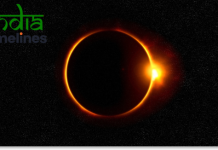
The vastness of space has long fascinated humanity, but it also poses threats that demand constant vigilance. Among these cosmic hazards are asteroids—large rocks that drift through the solar system, occasionally crossing Earth’s orbit. While most asteroids pass harmlessly by, every so often, some come dangerously close to our planet. In 2024, NASA suddenly issued an alert that two massive asteroids are on a trajectory that could bring them near Earth. This revelation has sent ripples of concern and curiosity throughout the global scientific community and beyond.
Understanding the Threat of Asteroids
Asteroids are rocky remnants left over from the early formation of our solar system, around 4.6 billion years ago. Most of them are found in the asteroid belt between Mars and Jupiter, but some are in orbits that bring them closer to Earth. These objects, known as Near-Earth Objects (NEOs), are the ones that pose potential threats.
NASA, along with space agencies around the world, continuously monitors these NEOs. Their goal is to detect any objects that might collide with Earth and assess the potential damage they could cause. While the vast majority of asteroids burn up in Earth’s atmosphere or pass at safe distances, larger ones have the potential to cause significant destruction. A direct impact from a large asteroid could lead to devastating consequences—triggering tsunamis, earthquakes, and even mass extinction, as happened when an asteroid wiped out the dinosaurs 66 million years ago.
In 2024, NASA has flagged two significant asteroids that have captured global attention due to their size and proximity to Earth.
NASA’s Sudden Alert: The Asteroids in Focus
On August 2024, NASA’s Center for Near-Earth Object Studies (CNEOS) issued an urgent alert regarding two massive asteroids that are currently on a course toward Earth. These asteroids, named 2024 QX1 and 2024 RX2, were first detected by NASA’s NEOWISE space telescope, a vital tool used to scan the skies for potential asteroid threats.
Asteroid 2024 QX1:
- Diameter: Approximately 1 kilometer.
- Speed: Traveling at 25 kilometers per second.
- Closest Approach: Expected on October 12, 2024.
- Risk Level: Low to moderate, but the size and speed make it a subject of intense study.
Asteroid 2024 RX2:
- Diameter: 500 meters.
- Speed: Moving at around 20 kilometers per second.
- Closest Approach: Expected on November 1, 2024.
- Risk Level: Very low, though its proximity warrants continued monitoring.
Both asteroids are considered Potentially Hazardous Objects (PHOs) due to their size and the fact that they will pass within 7.5 million kilometers of Earth’s orbit. While these distances may seem vast in earthly terms, they are close enough in astronomical measurements to warrant significant attention. NASA and other space agencies are working around the clock to track these asteroids’ paths, refine their projections, and determine whether any course alterations could bring them closer.
How NASA Tracks and Monitors Asteroids
NASA’s Planetary Defense Coordination Office (PDCO) is responsible for identifying and tracking near-Earth objects that pose a potential threat to Earth. It works with a range of technologies and observatories, including ground-based telescopes and space-based missions like NEOWISE, to scan the skies for asteroids and other objects.
Once an asteroid is discovered, scientists calculate its orbit, size, and potential trajectory using complex algorithms. These projections allow them to determine the likelihood of impact and assess whether additional measures, such as space missions to divert the asteroid, are needed.
The sudden alert about 2024 QX1 and 2024 RX2 highlights just how crucial this ongoing surveillance is. Even though these objects were detected only recently, the swift response from NASA and the global scientific community underscores the importance of constant monitoring and preparedness.
The Impact of an Asteroid Collision
The prospect of an asteroid colliding with Earth is a scenario that has long been explored in science fiction, but it is also a very real concern for scientists. The potential impact of an asteroid depends on several factors, including its size, speed, and composition, as well as the location of impact.
Small Asteroids: Asteroids less than 30 meters in diameter typically burn up in Earth’s atmosphere and cause minimal damage. For example, the Chelyabinsk meteor that exploded over Russia in 2013 was about 20 meters wide and released energy equivalent to about 30 Hiroshima bombs, but caused no fatalities, although it injured over 1,000 people from broken glass and debris.
Medium-Sized Asteroids: Asteroids between 100 meters and 1 kilometer in diameter can cause regional damage. If such an object were to strike the Earth, it could lead to widespread devastation over a large area, triggering tsunamis if it hits the ocean, or flattening cities if it strikes land.
Large Asteroids: Asteroids larger than 1 kilometer pose an existential threat. A collision with an asteroid of this size could have global consequences, causing massive shockwaves, fires, and a “nuclear winter” effect, where dust and debris block out sunlight, leading to a collapse in agriculture and potentially threatening human survival.
Fortunately, 2024 QX1 and 2024 RX2 are not currently projected to impact Earth. However, their size and proximity serve as a reminder of the potential risks asteroids pose, and the need for global preparedness.
Planetary Defense: Can We Stop an Asteroid?
NASA has not only been focusing on detecting asteroids but also on developing technologies to prevent an impact. In recent years, space agencies have been exploring ways to deflect or disrupt asteroids on a collision course with Earth. One of the most promising approaches is the kinetic impactor technique—essentially, sending a spacecraft to collide with the asteroid and alter its trajectory.
In 2022, NASA successfully tested this technique through its Double Asteroid Redirection Test (DART) mission. The DART spacecraft deliberately crashed into a small moonlet of the asteroid Didymos, successfully altering its orbit. This groundbreaking mission demonstrated that humanity has the potential to defend Earth from asteroid impacts, although much more research and development are needed.
Other potential planetary defense strategies include:
- Gravity Tractors: Using a spacecraft’s gravitational pull to slowly change the asteroid’s trajectory.
- Nuclear Explosions: Detonating a nuclear device near the asteroid to alter its path, although this option is risky due to potential fragmentation.
- Solar Sails: Harnessing sunlight to gently push the asteroid off its course over time.
While these methods are still being refined, they offer hope that, with sufficient warning, Earth could avoid a catastrophic collision.
Public Reaction and Media Frenzy
Whenever NASA issues alerts about asteroids, public interest and concern rise significantly. The announcement of 2024 QX1 and 2024 RX2 has been no different. News outlets, social media platforms, and online communities have been abuzz with discussions about the potential danger these space rocks pose.
While NASA and scientific experts are quick to reassure the public that the risk of impact is extremely low, the fear of an asteroid strike lingers in the back of many minds. This reaction is understandable, given the profound impact an asteroid collision would have on life on Earth.
However, the media’s role in disseminating accurate information is crucial. Sensational headlines that exaggerate the threat can lead to unnecessary panic, while clear communication about the facts helps to educate the public and reinforce the importance of ongoing asteroid monitoring efforts.
The Future of Asteroid Research and Mitigation
As we look to the future, it is clear that the field of asteroid research and planetary defense will continue to grow in importance. The detection of 2024 QX1 and 2024 RX2 serves as a timely reminder that space is dynamic and unpredictable, and that Earth is not immune to the risks posed by asteroids.
In the coming years, NASA and other space agencies are planning additional missions to study asteroids up close. For example, NASA’s OSIRIS-REx mission, which returned samples from the asteroid Bennu, is providing scientists with valuable insights into the composition and structure of these objects. Such missions are essential for understanding how to effectively deflect or destroy potentially hazardous asteroids.
Additionally, increased international cooperation will be key to improving global preparedness. Space agencies from around the world, including ESA (European Space Agency), Roscosmos (Russia), and JAXA (Japan), are contributing to the effort to monitor and mitigate asteroid threats. The more data and resources that are pooled, the better the chances of averting disaster.
Conclusion
NASA’s sudden alert about two huge asteroids heading toward Earth in 2024 has reignited conversations about the risks posed by space rocks. While 2024 QX1 and 2024 RX2 are not expected to collide with our planet, their proximity serves as a reminder of the ongoing need for vigilance in monitoring asteroids and preparing for potential impacts.
As technology and planetary defense strategies evolve, humanity is better equipped than ever to deal with these cosmic threats. However, the work is far from over. Continued research, innovation, and international collaboration are essential to ensuring that we can protect Earth from the hazards lurking in the vastness of space.































